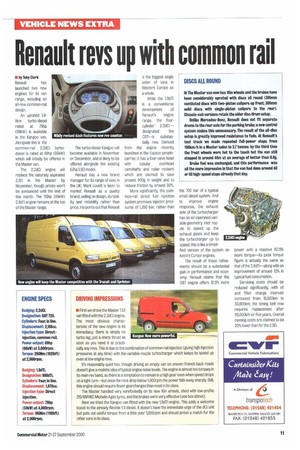DRIVING IMPRESSIONS
Page 13

If you've noticed an error in this article please click here to report it so we can fix it.
• First we drove the Master 133 van fitted with the 2.2dCi engine. The most obvious characteristic of the new engine is its immediacy: there is simply no turbo lag, just a sharp thrust as soon as you need it at practically any revs. This is due to the combination of common-rail injection (giving high injection pressures at any time) with the variable-nozzle turbocharger which keeps its speed up even at low engine revs.
It's reasonably quiet too, though driving an empty van on uneven French back roads doesn't give a realistic idea of typical engine noise levels. The engine is almost too torquey in its main rev band, as there is a temptation to remain in a high gear even when speed drops on a tight turn—but once the revs drop below 1,000rpm the power falls away sharply. Still, this engine should require fewer gearchanges than most in its class.
The Master handled very surefootedly on its new 16in wheels, shod with low-profile 215/65R16C Michelin Agilis tyres, and the brakes were very effective (see box above).
Next we tried the Kangoo van fitted with the new 1.9dTi engine. This adds a welcome boost to the already flexible 1.9 diesel. it doesn't have the immediate urge of the dCi unit but puts out useful torque from a little over 1,000rpm and should prove a match for the other vans in its class.
Kangoo: Now more powerfuL












































































































